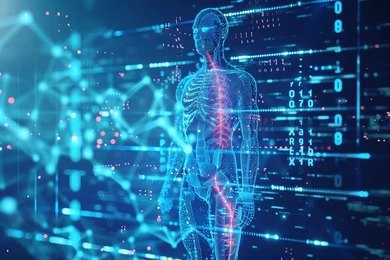What is the Purpose of a 3D Body Scan?
In recent years, 3D body scanning technology has gained significant traction across various industries, from healthcare and fitness to fashion and manufacturing. But what exactly is a 3D body scan, and why is it so valuable? This article explores the purpose of 3D body scanning, its applications, and the benefits it offers to individuals and businesses alike.
Understanding 3D Body Scanning
A 3D body scan involves capturing the precise shape and dimensions of a person’s body using advanced imaging technology. Unlike traditional measurement methods, which rely on manual tools like measuring tapes, a 3D body scan creates a digital model of the body with exceptional accuracy. This is achieved through the use of specialized scanners that employ techniques such as structured light, laser scanning, or photogrammetry.
The result is a highly detailed three-dimensional representation of the body, which can be analyzed, manipulated, and used for a variety of purposes.
Key Purposes of a 3D Body Scan
-
Fitness and Health Tracking
In the fitness and health industry, 3D body scanning is a game-changer. It provides users with precise data on their body composition, including metrics such as body fat percentage, muscle mass, and posture alignment. This information allows individuals to:
- Track progress over time.
- Set realistic fitness goals.
- Identify imbalances or areas for improvement.
Fitness professionals and trainers can also use this data to create personalized workout and nutrition plans tailored to their clients’ specific needs.
-
Custom Clothing and Apparel
One of the most popular applications of 3D body scanning is in the fashion industry. By capturing exact body measurements, 3D scans enable the creation of custom-fitted clothing. This eliminates the guesswork and inaccuracies associated with traditional sizing systems. Benefits include:
- Perfectly tailored garments.
- Reduced returns and exchanges for online retailers.
- Enhanced customer satisfaction.
Some companies even offer virtual try-on experiences, allowing customers to see how clothing will fit before making a purchase.
-
Medical Applications
In healthcare, 3D body scans are used for diagnostic and therapeutic purposes. For example:
- Posture Analysis: Identifying issues such as scoliosis or uneven weight distribution.
- Prosthetics and Orthotics: Designing custom devices that fit perfectly.
- Surgical Planning: Providing detailed anatomical models to aid in procedures such as reconstructive surgery.
These applications improve patient outcomes by ensuring greater precision and personalization in medical treatments.
-
Weight Loss and Body Transformation
For individuals on weight loss or body transformation journeys, 3D body scanning provides a more comprehensive view of progress than a traditional scale. By visualizing changes in body shape and composition, users gain a deeper understanding of their physical transformation, which can be a powerful motivator.
-
Sports Performance Optimization
Athletes and sports professionals use 3D body scanning to analyze their physical attributes and optimize performance. Scans can reveal asymmetries, muscle imbalances, and other factors that may affect athletic performance. Coaches and trainers can then develop targeted strategies to enhance strength, flexibility, and overall performance.
-
Ergonomics and Workplace Safety
In industries where physical labor is prevalent, 3D body scans are used to design ergonomic tools, equipment, and workspaces. By understanding the body’s dimensions and movement patterns, companies can:
- Reduce the risk of workplace injuries.
- Improve employee comfort and productivity.
- Ensure compliance with safety standards.
-
Entertainment and Gaming
The entertainment industry uses 3D body scanning to create lifelike avatars and characters for video games, movies, and virtual reality experiences. Scans capture intricate details of a person’s body, including facial expressions and movements, making digital representations more realistic and engaging.
Advantages of 3D Body Scanning
- Accuracy and Precision3D body scans provide highly accurate measurements, reducing errors associated with manual methods. This precision is crucial in applications such as medical treatments and custom apparel.
- Time EfficiencyA complete body scan can be performed in seconds, saving time for both individuals and professionals.
- Non-Invasive and SafeThe process is entirely non-invasive and uses safe imaging techniques, making it suitable for all age groups.
- Comprehensive Data3D scans capture a wealth of information that can be analyzed for various purposes, from fitness tracking to ergonomic design.
- Enhanced User ExperienceFor businesses, offering 3D scanning services can enhance customer satisfaction by providing personalized and precise solutions.
The Future of 3D Body Scanning
As technology continues to evolve, the applications of 3D body scanning are expected to expand even further. Innovations such as mobile scanning apps and wearable devices are making the technology more accessible to consumers. Additionally, advancements in artificial intelligence and machine learning are enhancing the analysis of 3D scan data, unlocking new possibilities in personalized healthcare, fitness, and beyond.
Conclusion
The purpose of a 3D body scan extends far beyond simple measurements. By providing accurate, detailed, and actionable data, this technology is transforming industries and improving the lives of individuals. Whether you’re looking to optimize your fitness journey, find the perfect fit in clothing, or enhance workplace safety, a 3D body scan offers invaluable insights that drive better outcomes.

